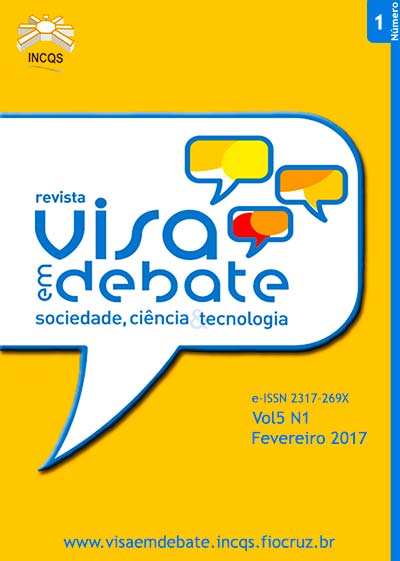Honey health risk in Brazil related to new threats: emerging chemical residues and contaminants
DOI:
https://doi.org/10.22239/2317-269X.00789Keywords:
Honey, Residues, Contaminants, Fitotoxins, Quinolones, Sanitary SurveillanceAbstract
This narrative literature review deals with the honey, its context as a product of varied uses and with significant socio-economic relevance, aiming to describe some emerging chemical residues and contaminants and their aspects related to Health Surveillance. Honey is a substance that, beyond being used as food since the beginning of human civilization, also has therapeutic and pharmacothecnical applications. Brazil is among the major world producers and exporters of honey and this production play a relevant socio-economic role in the country. Like other products of animal origin, honey is subject to the presence of residues of substances used in the protection of swarms and contaminants from the environment. Despite the presence of substances in honey with potential impact on health is expected by health agencies, it is required to update as to which substances should or should not be monitored. This review lists examples of classes of substances that are not currently monitored, considered as “emerging” for not being regulated properly in Brazil and in many parts of the world. For the emerging contaminants covered here, scientific publications with national data are scarce or non-existent when it comes to honey, showing that new scientific knowledge production is needed in this area. It is recommended further study of the occurrence of quinolones, pyrrolizidine alkaloids, grayanotoxins and substances used in the production of polymers in honey in Brazil, so that health risks from the consumption of honey containing these substances are known and minimized or eliminated.Downloads
Downloads
Published
Issue
Section
License
Copyright (c) 2017 Health Surveillance under Debate: Society, Science & Technology (Vigilância Sanitária em Debate: Sociedade, Ciência & Tecnología) – “Visa em Debate”

This work is licensed under a Creative Commons Attribution-NonCommercial-NoDerivatives 4.0 International License.
COPYRIGHT ALLOWANCE The author (s) hereinafter designated as the ASSIGNOR hereby assign and transfer, free of charge, the ownership of the copyrights related to this ARTICLE to the Vigilância Sanitária em Debate: Sociedade, Ciência & Tecnologia (Health Surveillance under Debate: Society, Science & Technology) – Visa em Debate, represented by FUNDAÇÃO OSWALDO CRUZ, established at Av. Brasil, nº 4365, Manguinhos, Rio de Janeiro, RJ, Brazil, CEP 21045-900, under the conditions set out below: (a) The terms and conditions set forth in this Agreement shall apply to the following: 1. The ASSIGNOR declares that they s(he) is (are) the author (s) and owner (s) of the copyrighted property of the ARTICLE submitted. 2. The ASSIGNOR declares that the ARTICLE does not infringe the copyrights and / or other property rights of third parties, that the disclosure of images (if any) has been authorized and that they s(he) assume(s) full moral and / or property liability for its content, before third parties. 3. THE ASSIGNOR assigns and transfers all copyrights relating to the ARTICLE to the ASSIGNEE, especially the rights of editing, publication, translation into another language and reproduction by any process or technique. The ASSIGNEE becomes the exclusive owner of the rights related to the ARTICLE, and any reproduction, totally or partially, is prohibited in any other means of publicity, printed or electronic, without prior written authorization from the ASSIGNEE. 4. The assignment is free and, therefore, there will be no remuneration for the use of the ARTICLE by the ASSIGNEE.






